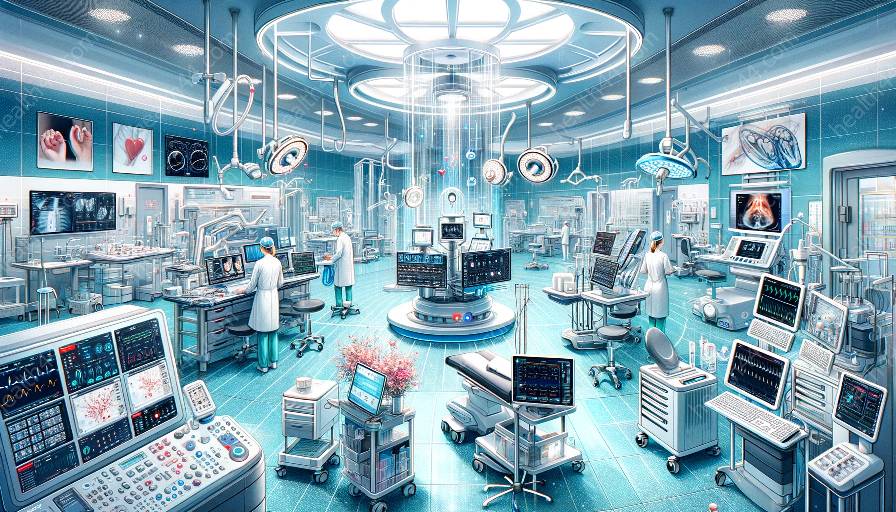In recent years, bioengineering has made significant strides in improving prosthetic and orthotic devices, revolutionizing the options available to individuals with limb loss or physical disabilities. By merging the principles of bioengineering and medical devices, researchers and engineers have paved the way for more functional, comfortable, and natural prosthetic and orthotic solutions. Let's delve into the ways bioengineering is transforming the field and the lives of those in need of these devices.
The Role of Bioengineering in Prosthetics and Orthotics
Bioengineering, also known as biomedical engineering, is the application of engineering principles and design concepts to medicine and biology for healthcare purposes. This field presents a multidisciplinary approach, combining biology, medicine, and engineering to develop technologies and devices that can enhance the quality of healthcare, medical diagnostics, and treatment. When focused on prosthetics and orthotics, bioengineering strives to create more functional, comfortable, and natural solutions that seamlessly integrate with the user's body.
Advancements in Prosthetic Devices
Prosthetic devices are artificial limbs designed to replace body parts lost through trauma, disease, or congenital conditions. Bioengineering has significantly improved the functionality and comfort of prosthetics through various innovations:
- Bionic Limbs: Bioengineering has led to the development of bionic limbs, which incorporate advanced robotics and sensors to provide more natural movements and better responsiveness to the user's intentions. These limbs can be controlled by the user's muscles or even nerve signals, offering a higher level of integration with the body.
- Comfort and Fit: Through innovative materials and designs, bioengineering has improved the comfort and fit of prosthetic devices, reducing issues like skin irritation and discomfort that users often face. Customized 3D printing and scanning technologies have also enhanced the customization and fit of prosthetics for individual users.
- Sensory Feedback: One of the most groundbreaking advancements in prosthetics is the integration of sensory feedback, allowing users to feel touch, pressure, and temperature through their artificial limbs. This achievement has been made possible through bioengineering, contributing to a more intuitive and natural experience for amputees.
- Energy Efficiency: Bioengineering has focused on developing prosthetic devices that are more energy-efficient, requiring less physical effort from the user and reducing fatigue associated with prolonged use. This enhances the overall usability and performance of prosthetic limbs.
Innovations in Orthotic Devices
Orthotic devices are external braces or supports used to prevent or correct musculoskeletal impairments. Bioengineering advancements have resulted in notable improvements in orthotic devices:
- Lightweight and Durable Materials: Bioengineers have introduced lightweight and durable materials that improve the functionality and comfort of orthotic braces, making them less intrusive during daily activities and enhancing user compliance.
- Adaptive Control Systems: Advanced bioengineering has led to the development of adaptive control systems in orthotic devices, allowing for dynamic adjustments and personalized support based on the user's movements and needs. This dynamic responsiveness enhances the effectiveness of orthotic treatments.
- Real-Time Biomechanical Monitoring: Bioengineering has enabled the integration of real-time biomechanical monitoring into orthotic devices, providing valuable data on the user's movements and gait patterns. This information allows for personalized adjustments and optimization of the orthotic device's support and function.
- Customization and Ergonomics: Through bioengineering, orthotic devices can now be customized and engineered to better match the user's anatomy and provide ergonomic support, resulting in improved comfort and functionality.
Challenges and Future Directions
While bioengineering has brought significant advancements to prosthetic and orthotic devices, several challenges and opportunities lie ahead:
- Biocompatibility: Future bioengineering efforts will focus on enhancing the biocompatibility of prosthetic and orthotic materials to minimize the risk of skin irritation and allergic reactions, particularly for long-term users.
- Neural Interface Development: The continued development of neural interfaces that enable seamless communication between the user's nervous system and the prosthetic device will be a crucial area of focus for enhancing the natural control and sensory feedback of artificial limbs.
- Patient-Specific Solutions: Bioengineering will further advance the development of patient-specific solutions, leveraging technologies like 3D scanning, modeling, and printing to create highly tailored prosthetic and orthotic devices that closely match the individual's anatomy and functional needs.
- Clinical Integration: The integration of bioengineered prosthetic and orthotic devices into clinical practice will require ongoing collaboration between bioengineers, medical professionals, and rehabilitation specialists to ensure seamless adoption and optimal outcomes for users.
- Regulatory Considerations: As bioengineered prosthetic and orthotic devices become more complex and interconnected, regulatory frameworks will need to evolve to address safety, efficacy, and interoperability standards, ensuring the reliability and safety of these advanced devices.
Conclusion
In conclusion, the intersection of bioengineering and medical devices has led to remarkable improvements in prosthetic and orthotic devices, greatly enhancing the quality of life for individuals with limb loss and musculoskeletal impairments. As bioengineering continues to evolve, it holds the promise of delivering even more natural, functional, and user-centric solutions, creating a brighter future for those in need of prosthetic and orthotic support.


